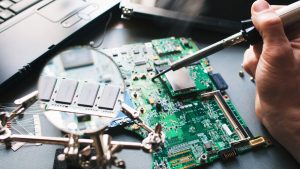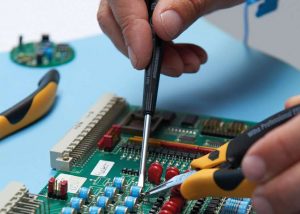Why do electronic equipment items stop working?
Phones, laptops and tablets and other electronic devices have “time bombs” – elements that cease to function after three or four years and the device becomes worthless. It remains to buy either a new device or to replace the item. Why does this happen?
Just as computer software slows down over time, and phones don’t know where the scratches come from, so the “life” of the elements is not eternal. Who is to blame for this? In part, the companies that produce them, but consumers themselves are thought to make a significant contribution.
Lithium-ion cells are commonly used in electronic devices. Their operation can be described more or less as follows: a positive electrode made of lithium is connected to a negatively charged electrode made of carbon. When charging the cell, the ions transfer a positive charge from the lithium cathodes to the carbon anodes. When the cell is charged, a positive charge “flows” back to the cathodes, creating an electrical voltage.
In essence, both the charging and discharging of an element operate on the same principle. Simply lithium-ion batteries are best suited for consumer electronics – they are lightweight, compact, can withstand high voltages and, most importantly, can be charged and discharged hundreds of times before they finally run out. Their “life” is long, but not eternal.
The “death” of the elements begins the same second they leave the factory. This is inevitable and irreplaceable, and lithium-ion cells can “run out” in just a few years, even if they are rarely used and incompletely charged. With continuous use, lithium-ion cells can “die” in less than two years – if we assume that losing a third of the capacity of the cell “dies”.
Knowing that the elements work on the principle of a chemical process, it becomes clear that energy will be constantly lost. There are no perfect chemical reactions, all of which lose at least some energy and create unwanted substances. Also in the case of elements.
The practical limit of ionic elements is almost reached, but new technologies are visible on the horizon. Studies have focused on the cathode. Carbon or mixtures thereof are traditionally used for the anode. Not only electronics but also electric car manufacturers are looking for more advanced items. However, unlike computer manufacturers, motorists cannot offer products that will become worthless in a few years. So a lot of attention is paid to finding elements that are efficient, capacious, and at the same time durable.


